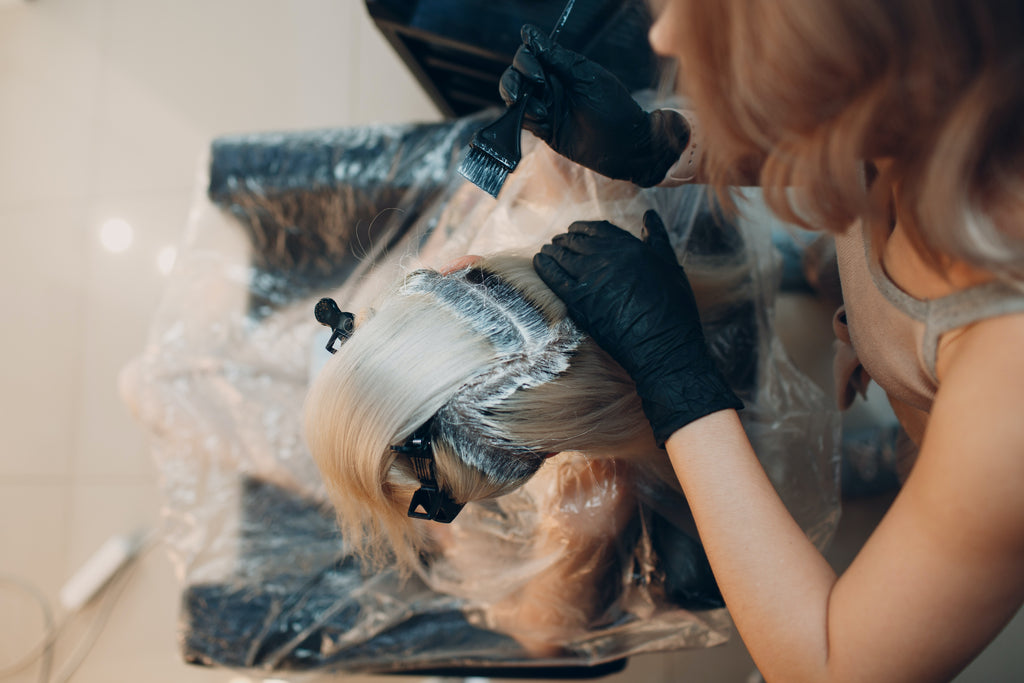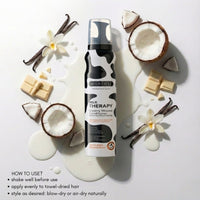The Dos and Don'ts of Professional Hair Coloring
Posted by MORFOSE COSMETICS

The Dos and Don'ts of Professional Hair Coloring
Introduction
In the world of professional hair coloring, achieving stunning and long-lasting results is an art form. Whether you're a seasoned stylist or someone looking to experiment with their hair color, it's crucial to understand the dos and don'ts of professional hair coloring. By following the right techniques and avoiding common pitfalls, you can ensure beautiful and vibrant hair that turns heads wherever you go. In this comprehensive guide, we'll explore the key factors to consider when coloring your hair professionally.
Choosing the Right Hair Color
Understanding Your Skin Tone
Before diving into the world of hair colors, it's essential to determine your skin tone. Your skin tone plays a vital role in selecting the most flattering hair color for you. Generally, skin tones fall into three categories: warm, cool, and neutral.
-
Warm skin tones: If you have warm undertones, your skin has hints of yellow, peach, or golden hues. Hair colors like golden blondes, caramel browns, and coppery reds complement warm skin tones beautifully.
-
Cool skin tones: If your skin has cool undertones, you may notice pink, blue, or red undertones. Opt for hair colors like platinum blondes, ash browns, or burgundy to enhance your features.
-
Neutral skin tones: Lucky individuals with neutral skin tones have a balanced mix of warm and cool undertones. You can experiment with a wide range of hair colors, from warm to cool shades, and find what suits you best.
Considering Your Eye Color
Your eye color can also influence the hair color choices that will enhance your overall appearance. Certain hair colors can make your eyes pop and create a striking contrast. Here are a few tips based on eye color:
-
Blue eyes: Shades like sandy blondes, warm browns, and cool blacks can bring out the vibrant blue hues in your eyes.
-
Green eyes: Opt for rich auburns, chestnut browns, and warm reds to complement your green eyes and create a captivating look.
-
Brown eyes: Brown-eyed individuals can experiment with various shades, such as honey blondes, chocolate browns, and deep blacks, to highlight their eye color and create depth.
Preparing for the Coloring Process
Consultation with a Professional
To ensure a successful hair coloring experience, it's crucial to consult with a professional stylist. A skilled colorist will assess your hair's condition, discuss your desired outcome, and recommend suitable hair colors and techniques. They will consider your hair's health, texture, and previous treatments to determine the best course of action.
Conducting a Strand Test
Before applying hair color to your entire head, it's essential to conduct a strand test. This test involves applying the hair color to a small section of your hair and observing the results. It helps you assess the color's outcome, its compatibility with your hair, and whether any adjustments are necessary.
Preparing Your Hair
To achieve optimal results, it's crucial to prepare your hair before the coloring process. Here are a few important steps to follow:
-
Avoid washing your hair for 24 to 48 hours before coloring. Natural oils act as a protective barrier for your scalp and hair during the coloring process.
-
Trim split ends and address any significant hair damage before coloring. This ensures that the hair color distributes evenly and gives a polished finish.
-
Deep condition your hair a week before coloring. Well-nourished hair is better equipped to handle the chemicals in hair dyes and maintains its health throughout the process.
The Coloring Process
Choosing the Right Hair Color Product
When it comes to professional hair coloring, the choice of hair color product is crucial. Different products offer varying results and longevity. Here are the main types of hair color products:
-
Permanent hair color: Ideal for individuals looking for long-lasting and significant color changes. Permanent hair colors lift the natural pigment of your hair and deposit new color molecules.
-
Semi-permanent hair color: A great option for those who want to experiment with different shades or add temporary color to their hair. Semi-permanent dyes don't penetrate the hair shaft as deeply as permanent dyes and gradually fade over time.
-
Demi-permanent hair color: This type of hair color falls between permanent and semi-permanent. It offers longer-lasting results than semi-permanent color while being less damaging than permanent color.
Applying the Hair Color
To achieve professional-looking results, it's best to follow these application guidelines:
-
Section your hair: Divide your hair into manageable sections using hair clips. This ensures that you can apply the hair color evenly and reach all areas of your head.
-
Start from the roots: Begin applying the hair color at the roots and work your way down. The roots usually require more processing time as they contain the most heat from your scalp.
-
Use a brush or applicator: Utilize a hair color brush or applicator bottle to ensure precise application. This helps prevent overlapping and patchy results.
-
Comb through the hair: Once the hair color is evenly applied, comb through your hair to distribute the product and ensure complete coverage.
Processing and Rinsing
After applying the hair color, it's essential to follow the processing time mentioned in the product instructions. This allows the color to develop and bond with your hair. Once the processing time is complete, rinse your hair thoroughly with lukewarm water until the water runs clear.
Post-Color Care and Maintenance
To keep your hair color vibrant and healthy, it's vital to follow these post-color care tips:
-
Use color-safe products: Invest in shampoos, conditioners, and styling products specifically formulated for colored hair. These products help preserve your hair color and prevent fading.
-
Minimize heat styling: Excessive heat from styling tools can cause color fading and damage. Limit the use of heat styling tools and always apply a heat protectant before using them.
-
Protect your hair from the sun: Prolonged sun exposure can lead to color fading. Whenever you're out in the sun, wear a hat or use UV-protective hair products to shield your hair from harmful rays.
-
Schedule regular touch-ups: As your hair grows, the roots will start showing your natural hair color. Schedule regular touch-up appointments with your stylist to maintain a seamless and polished look.
Conclusion
Mastering the art of professional hair coloring takes time and practice. By following the dos and don'ts outlined in this comprehensive guide, you can achieve stunning and long-lasting results. Remember to consult with a professional stylist, choose the right hair color products, and care for your colored hair properly. With proper knowledge and techniques, you can confidently transform your hair into a beautiful and vibrant masterpiece.



